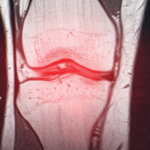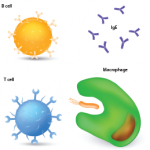 ACR CONVERGENCE 2020—Bulk cell analyses, common in medical research, can mask biologically and pathologically important information, making it difficult to distinguish between a universal response and a selective response. Bulk cell analyses can also make it difficult to distinguish between a differential change in a cell and an altered cell proportion. To make things even more complicated, even the definition of cell type is rapidly evolving, and increasingly depends on a cell’s molecular features as defined by the multi-omics: genome, epigenome, transcriptome and proteome. As cell biology evolves, so too does the need for a detailed understanding of single cells. This information can be used to answer innovative scientific questions, evaluate clinically important tissues and benchmark patterns in healthy tissues.1
ACR CONVERGENCE 2020—Bulk cell analyses, common in medical research, can mask biologically and pathologically important information, making it difficult to distinguish between a universal response and a selective response. Bulk cell analyses can also make it difficult to distinguish between a differential change in a cell and an altered cell proportion. To make things even more complicated, even the definition of cell type is rapidly evolving, and increasingly depends on a cell’s molecular features as defined by the multi-omics: genome, epigenome, transcriptome and proteome. As cell biology evolves, so too does the need for a detailed understanding of single cells. This information can be used to answer innovative scientific questions, evaluate clinically important tissues and benchmark patterns in healthy tissues.1
6 Single-Cell Technologies
On Friday, Nov. 6, at ACR Convergence 2020, Alex Kuo, PhD, senior scientist at Stanford University School of Medicine, California, described six single-cell technologies that are relatively mature and can be used for rheumatic disease research. “The exciting part of living in 2020 is that we now have a great selection of tools in our toolbox,” he said. These technologies are complementary with conventional immunology and molecular biology methods, and allow for new biological insights as well as the generation of new hypotheses. The new single-cell technologies are:
- Rapidly developing single-cell RNA sequencing (scRNA-seq);
- Cellular indexing of transcriptomes and epitopes by sequencing (CITE-seq) and RNA expression and protein sequencing assay (REAP-seq) for integrative protein and transcriptome analyses of single cells;
- Assay for transposase-accessible chromatin using sequencing (ATAC-seq) maps for chromatin dynamic maps of single cells;
- Mass cytometry (cytometry by time-of-flight) for highly multiplexed single-cell proteomic analysis;
- Imaging mass cytometry for highly multiplexed imaging with subcellular resolution; and
- Epigenetic landscape profiling using cytometry by time-of-flight (EpiTOF).
The first technology, single-cell RNA sequencing, uses single-cell capture, reverse transcription and complementary DNA amplification for input into sequencing systems. It allows for breadth, as well as depth, of cell analysis and can be used to determine the nature of biological samples. For example, scRNA-seq analysis has provided insight into the resident immune cells in the kidneys of patients with lupus nephritis, a condition that affects 40–70% of patients with systemic lupus erythematosus (SLE).2 Investigators used the technique to identify leukocytes that infiltrated the kidney and determined their functional state. In the same study, the researchers demonstrated the in-tissue differentiation of monocytes and macrophages, as well as broad expression of two chemokine receptors, CXCR4 and CX3CR1, implying a central role in cell trafficking. These findings demonstrate how scRNA-seq can be a powerful tool for rheumatic disease research, allowing for data that can be paired with antigen receptor sequencing.



